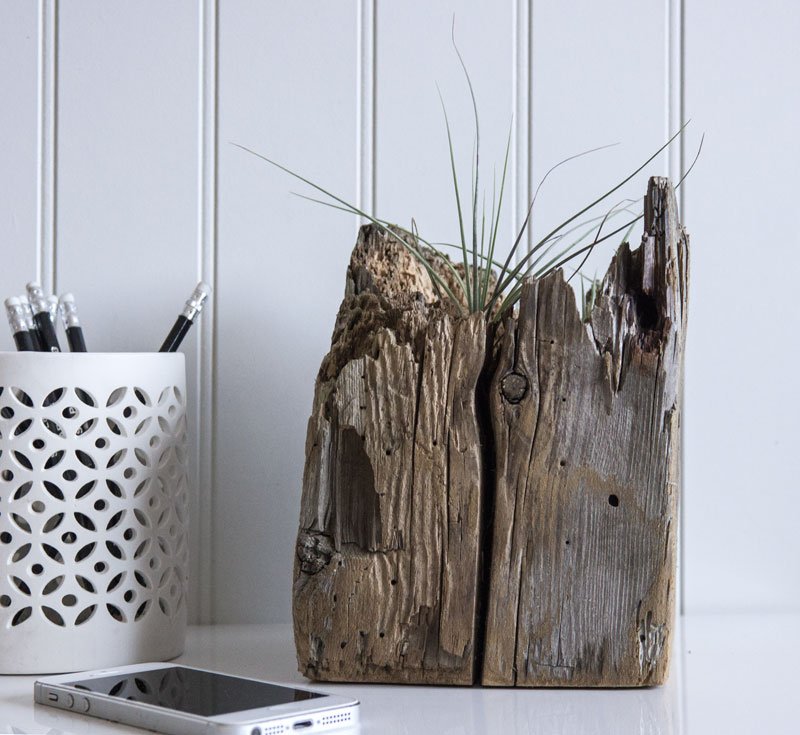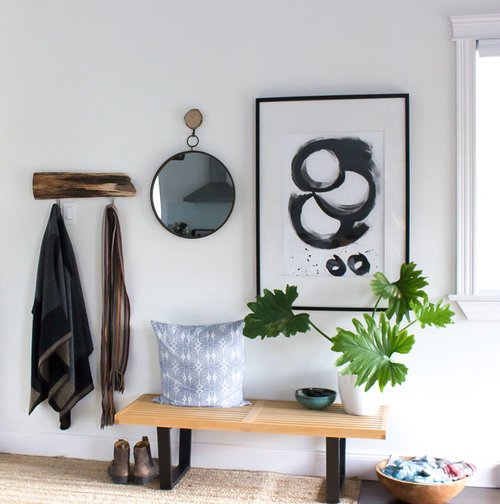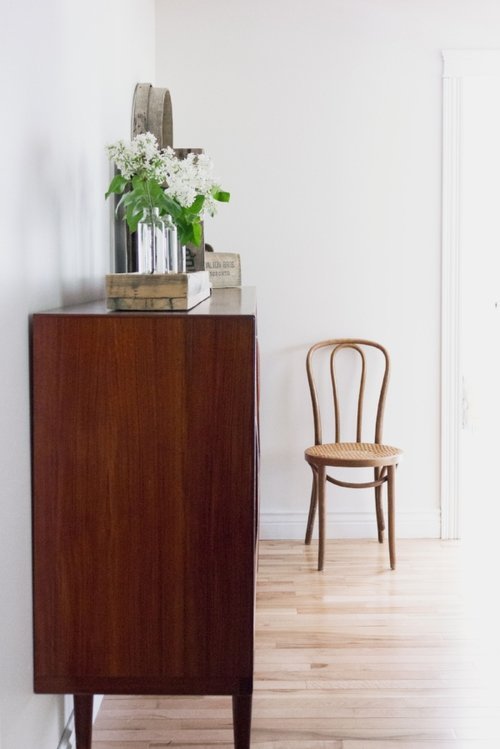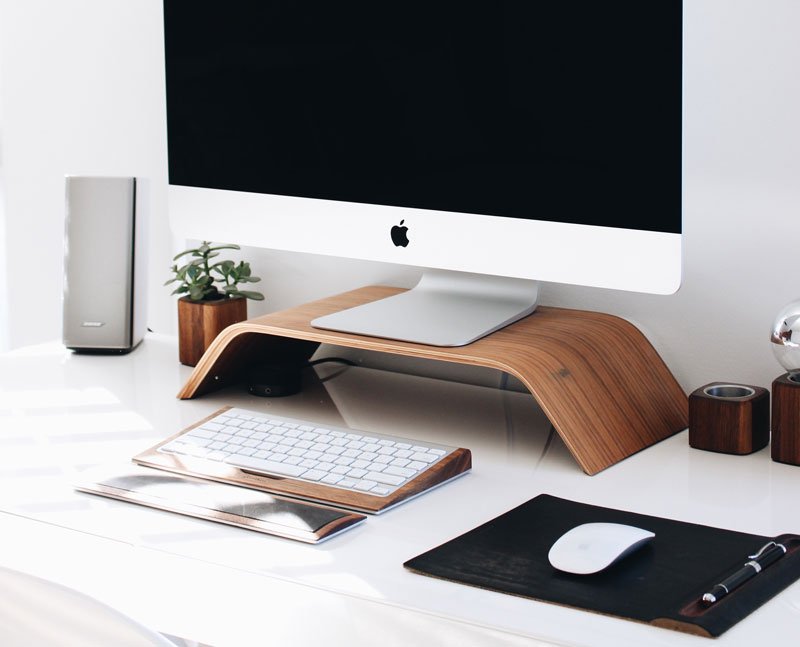5 Steps To Keep Your Kitchen Counters Clutter-Free
Here’s a stat I’m throwing out there. 76% of homes have trouble keeping their kitchen counters and/or dining table free from piles of clutter. 98% if they're a family.
I made that up. I don’t know the stats. Ha.
But judging by the questions I receive from readers and students, I’m guessing that’s pretty close. When I was talking with a friend about this problem in her household, her fists started balling up. I was a little afraid for her husband.
Seriously though, it’s frustrating! Just when you think you’ve got clutter under control, a new pile of crap gets dropped on your kitchen island. It’s enough to make you want to throw in the towel.
Hold on!
What you need is not just to declutter, but to put systems in place to eliminate the need for decluttering all the time.
5 STEPS TO PUTTING SYSTEMS IN PLACE TO CONTROL CLUTTER ON KITCHEN COUNTERS AND TABLES.
Go paperless.
The best strategy to reduce paper clutter - which makes up a lot of those piles sitting around - is to go paperless. Or at least as much as you can.
Sign up for online billing and banking and opt-out of paper bills.
Cancel magazine subscriptions and read online instead.
Unsubscribe from mailers and flyers, and put a note on your mailbox saying ”No flyers or junkmail”
Opt for email reminders from doctors and dentists office, etc.
2. Sort any remaining papers immediately.
Use baskets, bins or trays to designate homes for the papers you will inevitably need to keep. Label them with what goes inside, so everyone in the household is clear on where to put and find stuff.
Keep an in-basket near the entryway or a family command centre or hanging on a wall - this is where all incoming mail, notices, business cards, etc. go as soon as they come in the house. Label one each for every member of your family if they have a lot of school, hobby or work notices.
If you have a full family living at home, create a central command station that includes your in-boxes as well as a calendar where all appointments and scheduling gets written down. Keep also a shredder here or closeby.
After writing dates and info down, recycle or shred the paper.
Keep a basket or tray inside a drawer or cabinet (in your entryway or a home office or your command station) for receipts. Anytime anyone brings home a receipt that needs to be kept, it goes here.
Designate another basket for any warranties or instruction manuals for any new purchase brought home.
And use one more basket or tray for all financial papers like insurance, etc. that you need to keep on hand.
Keep a pretty basket near where you read the newspaper (if you haven’t gone paperless for your news). All papers are kept here for the week until you can get them out the door for recycling.
3. Designate personal drop zones.
Everyone in the house will have stuff they bring home with them to deal with later. A hoodie, a basketball, a tool from the garage, your keys. It’s normal. But what can also become normal is having a permanent drop zone “home” for all of these things.
Create an entryway drop zone for keys, change, sunglasses etc. with a pretty bowl or basket on a shelf or console table.
Find a nice big basket or bin to use as a drop zone for any sports equipment or toys. This could live in an entryway if it’s big enough or in another common area of the house.
Put hooks on the walls of your entryway to serve as the dropzone for backpacks and outdoor gear. If you have a tiny entryway, use hallway space for hooks.
Put hooks in each person’s bedroom to use as the drop zone for all “worn only once” clothing that doesn’t go into the laundry hamper yet.
Create another drop zone in each bedroom on top of a dresser by having a tray or basket for wallet, change, watch, lip balm, etc.
Use a cubby and bin system as a drop zone for toys in a living room if you have small children.
Put a glass jar and a little tray into a closed cabinet in the kitchen right above where hubby always drops his tools, change, and charger on the kitchen counter. It’s quick for you to move all of his junk directly above behind closed doors, and eventually he’ll learn to put it there himself.
If tools lying around the home are an issue, get creative and make a “toolbox drop zone” somewhere handy in the house to put them all. If you can’t beat ‘em, join ‘em by making it cute and contained!
4. Put the laundry away.
Any dirty laundry should be in hampers, not on floors. So keep a hamper in each bathroom that’s heavily used or each person’s bedroom.
Make it a habit to fold clean laundry on your bed. That way you have no choice but to fold it and put it away before you sleep at night. If it’s another family member’s laundry, have them do theirs on their bed if they are old enough.
5. Do a daily declutter dash.
There will be days (even most days!) when clutter inevitably piles up on flat surfaces of your home. But with the above systems in place, it should be manageable enough to clean up in just 10-15 minutes at the end of each day.
Load the dishwasher each night after supper and clear off the counters of dishes and meal prep clutter.
Pick up any odd clutter and put them in their designated drop zones.
As you brush your teeth before bed, clean up bathroom counters and put things in their place (and have the others in your house do that for the bathrooms that they use).
Remember, no home is perfect, and a perfect home is not what you need to strive for. A little clutter here and there from daily living is fine! As long as it has a home to go to, it won’t take you long to clean it up. Have patience with yourself and the others in your home - with practice, these news systems will become habit and the time spent picking things up will become less and less. Good luck!
Declutter the easy way!
Take the free 5-Day Declutter Dash challenge to tackle key areas of your home in just 15 minutes/day. Join the next challenge!
































